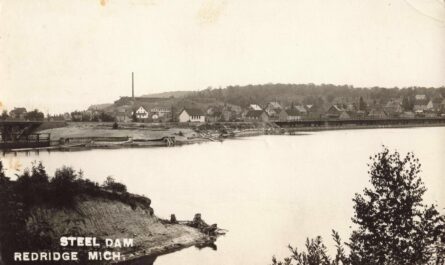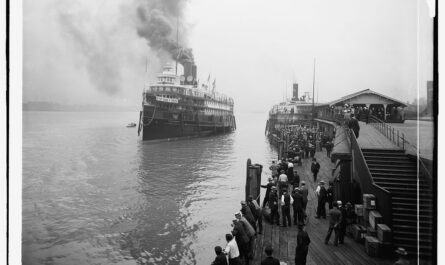Tucked into the rolling countryside of Lapeer County, Metamora, Michigan is a village where the past feels remarkably close. Between its preserved railroad depot, early storefronts, and lakeside summer camps, Metamora Michigan history tells a story familiar to many small Midwestern towns—one of steady change and strong community roots.
A Rail Stop That Built a Town

The railroad brought people and prosperity to Metamora. Its brick depot, marked clearly with a sign reading “Metamora,” became the town’s link to Flint, Detroit, and points beyond. The platform welcomed both passengers and freight, with carts lined up along the tracks ready to haul crates into the village. The building still stands, a physical reminder of the town’s role in Michigan’s once-vast rail network.
Winter Commerce on Wood-Planked Streets
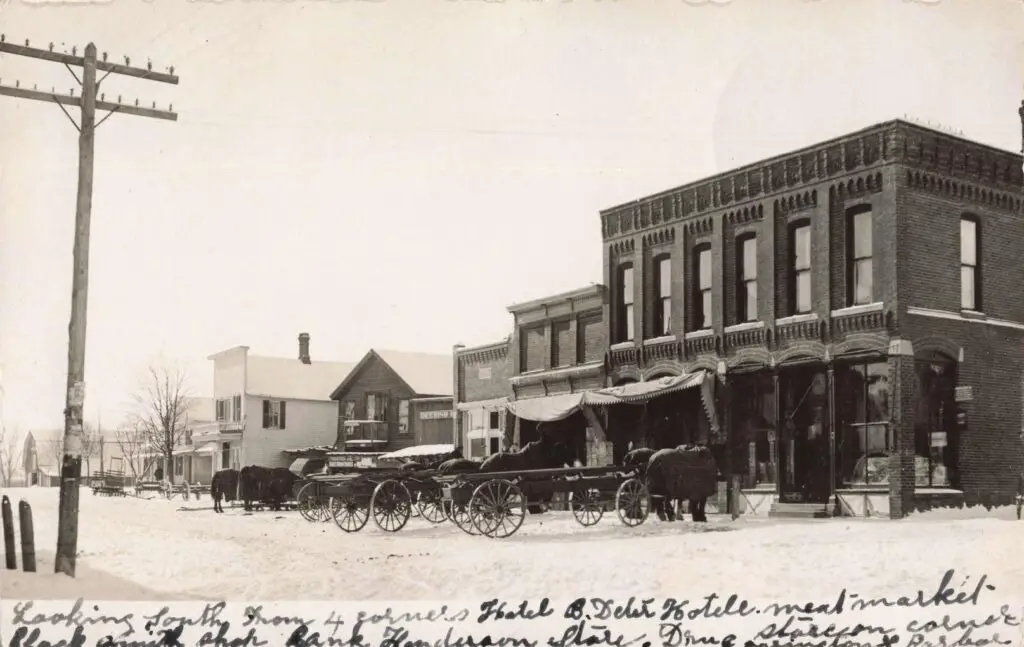
Photos from the early 1900s show a typical Michigan winter—snow-covered streets, horse-drawn wagons, and brick storefronts doing steady business. Kingo’s Hardware and the Hoard House were among the familiar fixtures. Business owners swept snow from steps while men in wool coats exchanged the week’s news. Back then, supplies had to last the season. Trips into town weren’t made lightly.
Metamora Hardware: Where Everyone Shopped

One of the village’s most enduring scenes is the white-painted Metamora Hardware building. Inside, customers found tools, paint, stove fittings, and winter gear. The signage was practical—“School Supplies” and “Rubber Footwear”—painted clearly above the shop’s wide windows. Long before big-box stores, everything a home or farm needed could be found right on Main Street.
Camp Metamora: Where Summer Came to Life
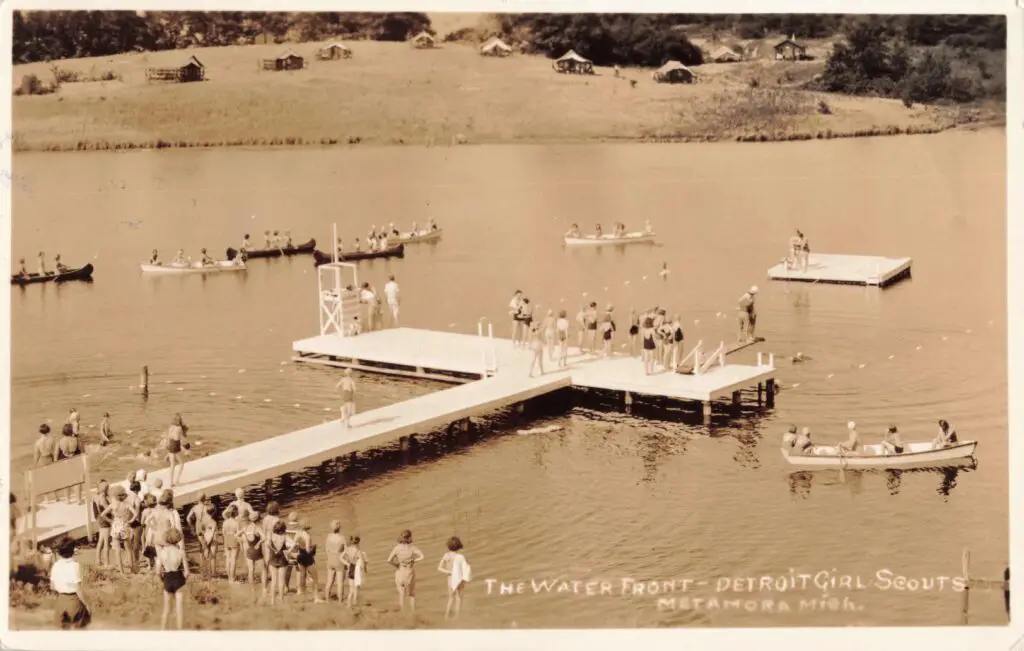
Metamora’s scenic setting also made it ideal for recreation. Camp Metamora, operated by the Detroit Girl Scouts, was a summer tradition for generations. A postcard from the 1930s shows dozens of girls lined up at the docks, waiting to canoe or dive into the lake. In the background, wooden cabins dot the shoreline, and counselors watch from a raised tower.
The Assembly Lodge hosted talent shows, songs, and rainy day games. For many Detroit families, this camp was their daughters’ first experience with the outdoors.
The White Horse Inn: Still Serving Since 1850
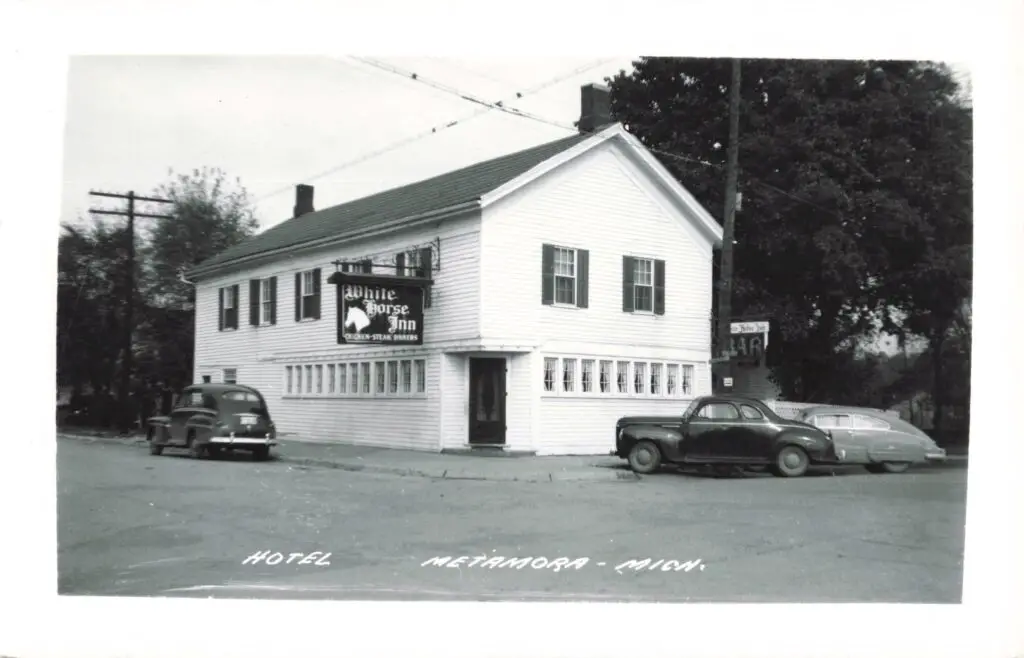
Just steps from the village center stands the White Horse Inn, built in 1850. It’s believed to be the oldest continuously operating restaurant in Michigan. Its white clapboard siding and clean lines have stayed nearly unchanged for more than a century.
In the 1950s, signs advertised chicken and steak dinners. Locals came for a good meal, and travelers came for the stories. The Inn was more than a restaurant—it was a gathering place, a local landmark linking Metamora’s pioneer era to the present.
Metamora Michigan History – A Village That Preserved Its Past

Today, Metamora, Michigan, has maintained much of what made it unique. The village has avoided large-scale development, choosing instead to preserve its Crossroads Historic District. Its architecture—Greek Revival, Italianate, and Gothic Revival—offers an authentic look at how rural Michigan towns evolved between 1850 and 1910.
For anyone interested in Michigan history, Metamora offers more than old photos. It offers continuity. You can still see the outlines of a horse hitch or trace a railroad’s influence in the layout of the streets.
Metamora, Michigan stands as a small town with a clear identity. Its people, its traditions, and its buildings are part of a shared story. One told in red brick, pine planks, and still water.

